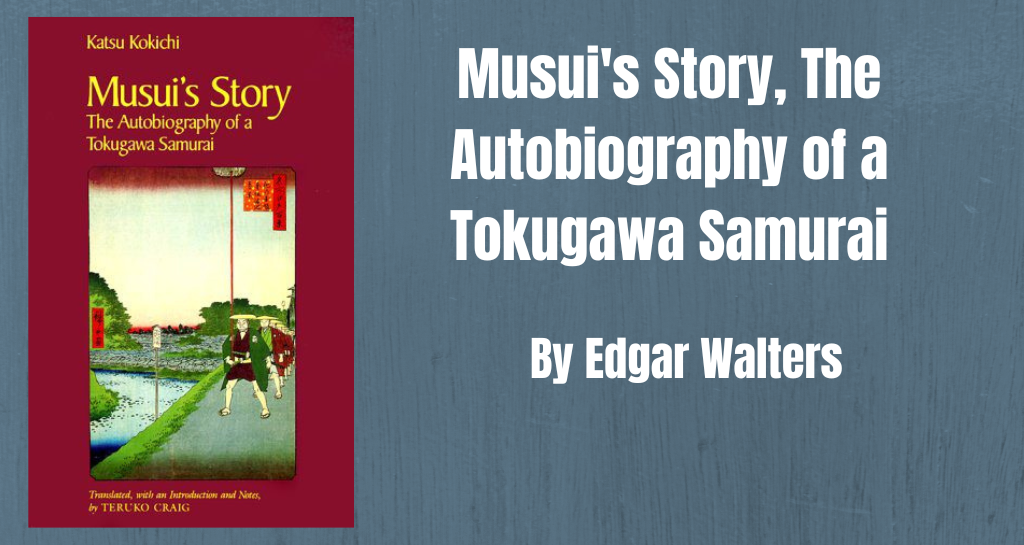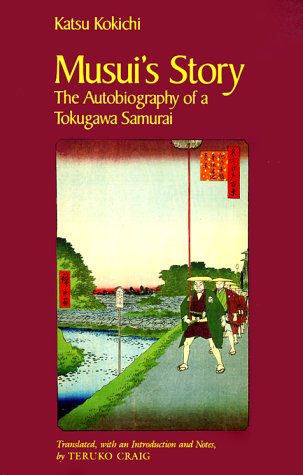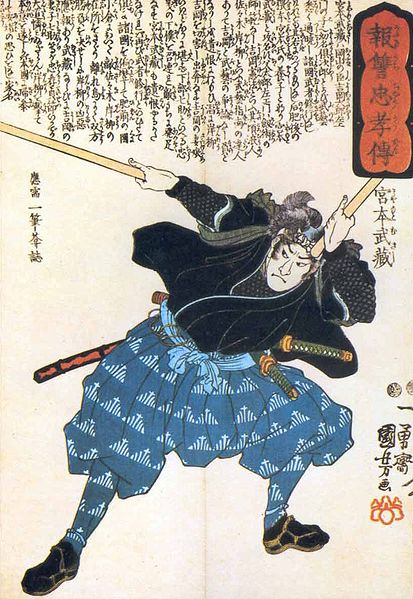
Musui’s Story is an exceptional account of one man’s hell-raising, rule-breaking, and living beyond his means. The autobiography documents the life of Katsu Kokichi, a samurai in Japan’s late Tokugawa period who adopted the name Musui in his retirement. Katsu is something of a black sheep within his family, being largely uneducated and deemed unfit for the bureaucratic offices samurai of his standing were expected to hold. As such, he typifies in many ways the lower ronin, or masterless samurai, many of whom famously led roaming, directionless lives and wreaked havoc among the urban poor and merchant classes.

The book is quick and simple to read, with barely literate Katsu’s prose skillfully translated by Teruko Craig. The autobiography follows Katsu’s whirlwind of adventures, which involved a great deal of fighting, name-calling, and extortion. What Katsu lacks in ambition is more than made up for by his knack for getting into trouble. The supposed premise of the autobiography is to serve as a cautionary tale for his descendants, as Katsu advises from the very beginning, “Take me as a warning.” In actuality, however, the story smacks of a thinly veiled account of braggadocio.
Many of the stories are almost certainly exaggerated, and even if they were not, they would not be exemplary of the samurai class as a whole. Still, the expectations and conflicts Katsu faces are representative of the underlying economic and social tensions of Tokugawa Japan. Musui’s Story offers a money-obsessed voice to the low-ranking samurai class, in light of its struggle to establish its purpose in a society that increasingly saw it as parasitic. Katsu broke with the accepted moral code of his class, exemplifying the societal struggle that marked one of Tokugawa Japan’s most distinctive features. The role of the Tokugawa samurai was increasingly out of touch with the social reality of the period. It was a class plagued by insecurity of both income and identity. Samurai had emerged as the dominant, warrior class during Japan’s feudalistic era. Originally a rural class, many samurai including Katsu came to live in Edo (modern day Tokyo) during the Tokugawa period, where they lived on capped government stipends. Samurai were, in name, at the top of Japan’s four-tiered shi-no-ko-sho system, but many found themselves unemployed, heavily indebted, and directionless.
Musui’s Story epitomizes the growing pressure many samurai must have faced as they were torn between outdated cultural expectations and an impossible financial reality. Katsu gives a charming and hilarious voice to the struggle, and through his story we see that a study of samurai teachings is insufficient to capture the samurai life in its actuality. Katsu all but abandons the bushido code he would have been taught, venturing among the urban poor and abusing the threat of seppuku, or honorable suicide, as a means of extortion to avoid payment and punishment.

These disjointed expectations for displaying wealth regardless of a samurai’s income level offer a simple explanation for Katsu’s decision to run away, twice, in shame. Tokugawa social insecurity might also be in some ways reminiscent of our contemporary society’s complex relationship to debt. Despite their temporal and geographical distance from the events in Katsu’s autobiography, UT students might find a few striking parallels to their own lives, but hopefully not so much that they would be inspired to imitate Musui’s violent antics.
Photo credits:
19th century woodblock print of the famous Japanese swordsman Miyamoto Musashi (Image courtesy of Wikimedia Commons)
Edgar Walters is a Plan II junior. He is an undergraduate intern at the Harry Ransom Center and associate editor at the Daily Texan. He would like to pursue a graduate degree in the humanities in the future.
Check out Jacob Troublefield’s winning submission for Not Even Past’s Second Annual Undergraduate Essay Contest.



